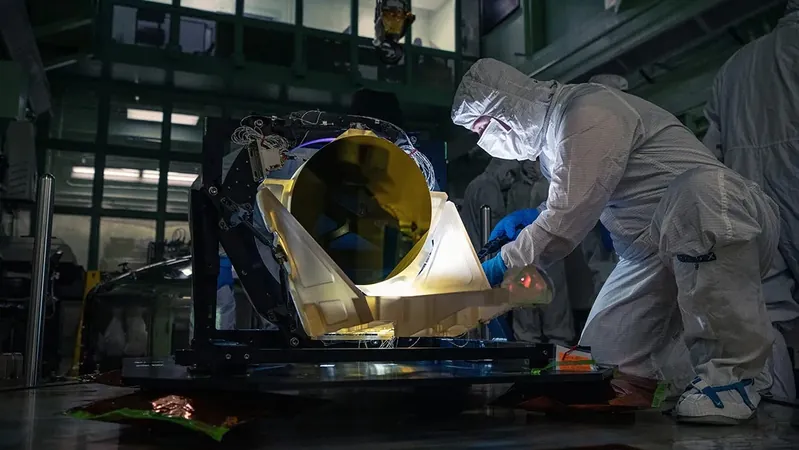
NASA's Groundbreaking LISA Telescopes: The Cosmic Quest for Gravitational Waves You Need to Know About!
2024-10-26
Author: Arjun
NASA has just revealed a stunning prototype for the LISA (Laser Interferometer Space Antenna) mission, which promises to take our understanding of the universe to unprecedented heights! This innovative endeavor will employ three state-of-the-art space probes designed specifically to detect and measure gravitational waves. These cosmic ripples are generated by some of the universe's most cataclysmic events, such as collisions involving black holes, and offer incredible insights into the fabric of our cosmos.
The Groundbreaking LISA Mission
LISA is poised to be the first observational facility in space devoted exclusively to studying gravitational waves, a phenomenon first theorized in 1916 by the legendary Albert Einstein. These waves are subtle fluctuations that ripple through space-time, caused by immensely powerful astronomical events. By deploying LISA, scientists hope to uncover the secrets behind phenomena like smaller black holes orbiting supermassive black holes, and even gather clues regarding the Big Bang—an event that set the universe into motion.
What sets LISA apart from previous ground-based observatories like NASA's LIGO and the European Virgo observatory is its ability to detect lower frequency gravitational waves that can only be measured in the vacuum of space. Each of the three probes will be strategically placed in a triangular formation, approximately 1.5 million miles apart, continuously scanning the cosmos while trailing about 30 million miles behind Earth in its orbit around the sun.
Why Is This Important?
The data collected from LISA is expected to revolutionize our understanding of celestial phenomena, offering new insights into black holes, cosmic inflation, and even the very origins of the universe. As NASA states, "Studying gravitational waves gives enormous potential for discovering the parts of the universe that are invisible by other means." By piecing together the information sent back by these probes, astronomers and physicists hope to elaborate on the universe's beginnings, its evolution, and its structure.
NASA's Key Contribution
NASA has taken charge of equipping each probe with a pair of advanced telescopes critical for the LISA mission. These prototypes, crafted by L3Harris Technologies in Rochester, New York, were unveiled by NASA recently. The telescopes feature a unique primary mirror coated with gold, designed to reflect infrared lasers and minimize heat loss in the frigid conditions of space. This cutting-edge technology incorporates Zerodur, a specialized glass-ceramic renowned for its thermal stability and precision—a must-have when exploring the cosmos.
Looking Ahead: When Will LISA Launch?
Although the LISA mission is set for a launch in 2035, there’s still considerable groundwork to be completed. Construction of the necessary components won’t kick off until January 2025 once a prime contractor is confirmed. Once ready, the mission will launch aboard the Ariane 6 rocket from Europe's Spaceport in French Guiana, a significant leap forward for space science.
As you can see, the LISA mission could redefine our grasp of the universe and its hidden wonders, setting the stage for discovery after discovery. Don't miss out on the journey ahead as NASA aims to unlock the mysteries of gravitational waves!



 Brasil (PT)
Brasil (PT)
 Canada (EN)
Canada (EN)
 Chile (ES)
Chile (ES)
 España (ES)
España (ES)
 France (FR)
France (FR)
 Hong Kong (EN)
Hong Kong (EN)
 Italia (IT)
Italia (IT)
 日本 (JA)
日本 (JA)
 Magyarország (HU)
Magyarország (HU)
 Norge (NO)
Norge (NO)
 Polska (PL)
Polska (PL)
 Schweiz (DE)
Schweiz (DE)
 Singapore (EN)
Singapore (EN)
 Sverige (SV)
Sverige (SV)
 Suomi (FI)
Suomi (FI)
 Türkiye (TR)
Türkiye (TR)